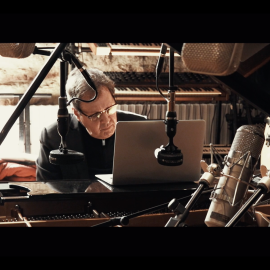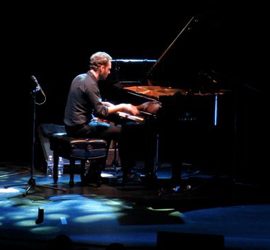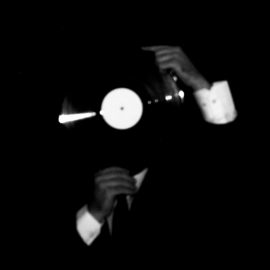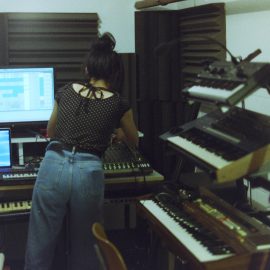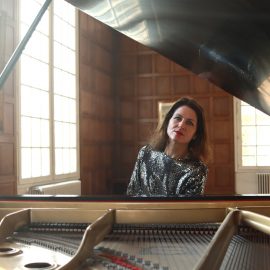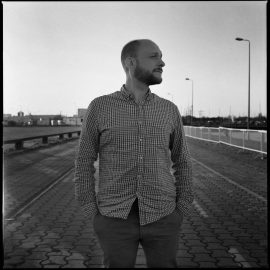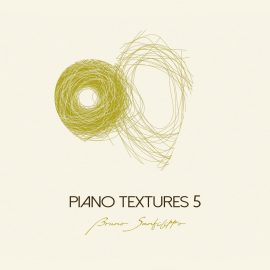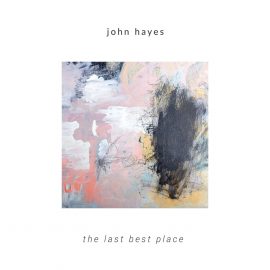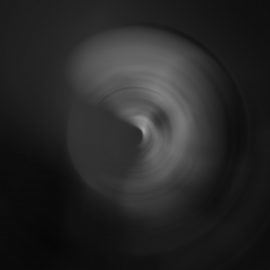
Lets start at the very beginning. Can you tell us how you got involved in composing, and what was your very first piece of gear?
I was introduced to classical music while taking piano lessons as a kid and I was fascinated by the sound of it. Listening and trying to play classical pieces such as Beethoven’s sonatas and Chopin waltzes, I was inspired to write my own music for piano although I wasn’t satisfied with the outcome of my efforts. Besides a keyboard which I was using to practice my piano lessons, I had a Commodore 64 and I remember that it had a simple music software on it which I can’t recall the name but I loved it and spent a lot of time on it even though it was very basic and I had no idea how to put it into use at the time.
Tell us about your favorite piece of hardware.
My current setup is fairly simple an all digital. The only piece of hardware that I have and use regularly is my Zoom H4n recorder, which I use a lot to collect materials for my music. The rest is all on computer.
And what about the software that you use for production?
I’m running Ableton Live, Max MSP, Audiomulch and some plugins connected to few controllers. I started with Pro Tools and produced my first two albums on that system but I find Ableton faster and more fun. I still use Pro Tools but only for mastering. I have a small collection of soft synths which are responsible for lot of the sounds that you can hear on my albums. My favorites are Aalto and Kavio from Madrona labs and also Absynth and Reaktor from native instruments. Sound toys are also amazing plugins. They’ve been my go to plugs for years and I use them almost on every track I compose. I also use Soundforge for editing. I love the idea of transforming an audio sample to something completely different through heavy editing. By slicing the audio and moving the pieces around. Deleting parts, reversing them, slowing them down and applying impulses using Sound Forge’s acoustic mirror. It is a slow but very fun process with interesting results.
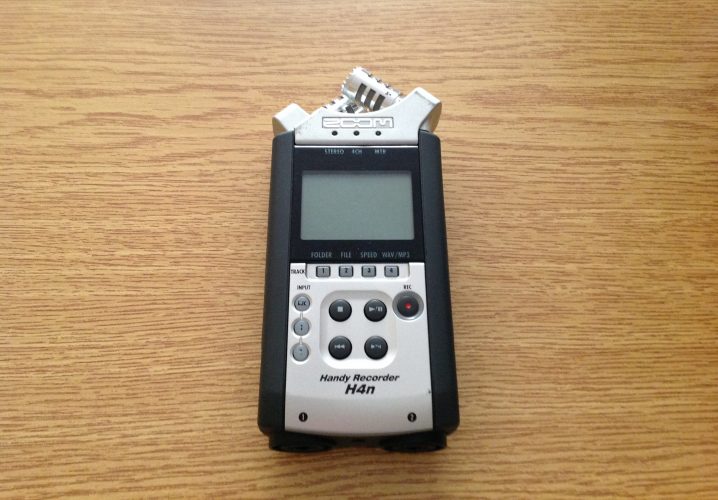
Is there a particular piece of gear that you’re just dying to get your hands on and do you think one day you’ll have it?
There are plenty, I’m not quite sure where to start. My ultimate fantasy is to put together a completely hardware based setup and produce something without the use of computers. A nice modular system, some outboard pedals and processors, and a few reel to reels. At the moment there are two pieces of gear that I really love and hope to lay my hands on someday: a Nord Modular G2 and a Kyma System. Of course a faster computer, and better audio interface and studio monitors are always appreciated by a computer musician.
Can you please share some aspects of sound design in your work?
As a computer musician, I think of sound design as a crucial part of the process. My pieces usually start with a single sound, something that I can build a track around, something that can prompt ideas. Therefore, designing that very first sound is an essential aspect of my work. I spent a lot of time working without any plans, just making all sort of interesting sounds and store them. I always start with a piece of recording. It can be a field recording or a sampled sound or a synth patch. I edit and manipulate it to the point that I feel like I have an interesting sound to work with. I also love the idea of recycling my old pieces, borrow some parts that I like and use them again in a new piece. Sometimes I try to transform them into a completely new sound or maybe simply bury them under other sounds. For example there is a single sound that you can hear on Unstable, White Forrest, and Homecoming.
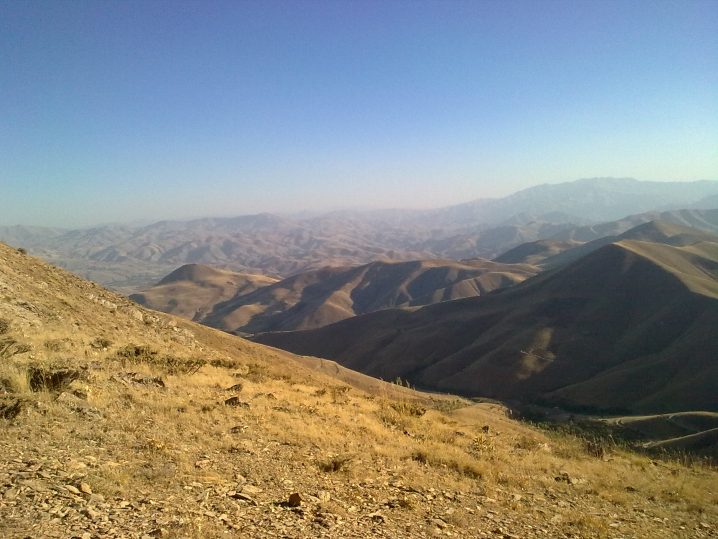
Any particular new techniques that you tried out for your new album?
I use convolution a lot for sound design. This technique has always produced great results for me, especially when I use unusual impulses, long pieces of recordings, field recordings, sounds of random objects and etc. It is always fun to capture tonal characteristics of one sound and apply it to another sound. There is a technique in audiomulch which I use sometimes by creating this huge and complex patch, starting with a looper device and run it through a long chain of processors. Then I put a few recorder devices in different parts of the chain and record them simultaneously, Finally I import all the sounds into an editor and comp them down to one clip. It is possible to recreate something similar to that in Ableton using live’s effect racks, creating different chains and switch between them in real time and record the results.
What is the most important environmental aspect of your current workspace and what would be a particular element that you would improve on?
My studio is quiet and has a lot of room which are the most important aspects for me especially the isolation, but I’m not happy with the design at the moment, I might make a few changes in future or maybe redesign the whole studio. The one thing that my studio really lacks at the moment is a nice view to the outside world. I like the idea of having a studio in bare nature.

What can you tell us about your overall process of composition? How are the ideas born, where do they mature, and when do they finally see the light?
Well I don’t have a fixed method and each album and each track has a different story. I try to work all the time, record sounds, make patches, experiment with different plugins and techniques. I have a large sample library of all sort of interesting sounds so when I want to start a new piece, I go through my sound library and find something that I think I can use as a starting point, and build on it by adding instruments, small melody lines, field recordings and what not. I usually work on several tracks at the same time, going back and forth between them. I try to work on them for a few weeks and leave them halfway done and switch to work on another album or collaboration projects. This way when I go back and start again, I have a fresh perspective and new ideas. Most of the times I work without any plans but there are times that I have a complete idea of the album in my mind before starting, the theme, how the album is gonna sound and even the titles. For example on “The Garden” and “Arrivals and Departures” I knew exactly what I wanted and how the album should sounds like, of course they ended up sounding a bit different than what I had in mind but close enough.
After the piece is complete, how do you audition the results? What are you reactions to hearing your music in a different context, setting, or a sound system?
I stop listening to the piece for a while, then I go back after a few weeks or so to listen and decide if I’m happy with it or not. Then I bounce down the mix and transfer it to my iPod and listen to it in different environments. The most important thing for me is to move away from computer once the piece is finished, and try to listen to the music from a listener’s perspective and try not to think of it as something that I can change or improve.

Do you ever procrastinate? If so, what do you usually find yourself doing during those times?
Yes, when I do I read or watch a whole ring cycle, which both are great sources of inspiration for me, so it’s not always a bad thing, sometimes you come back with really great and fresh ideas.
What gets you inspired?
Anything really, books, music, art, places, memories.
